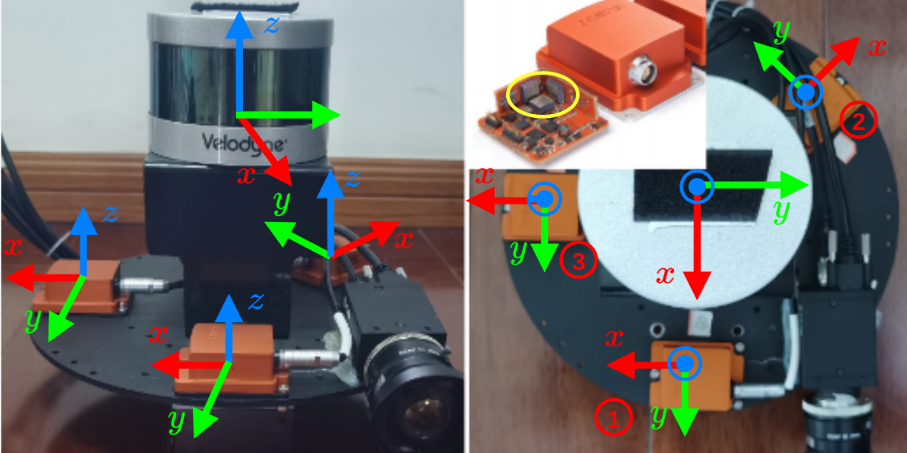LI-Calib is a toolkit for calibrating the 6DoF rigid transformation and the time offset between a 3D LiDAR and an IMU. It's based on continuous-time batch optimization. IMU-based cost and LiDAR point-to-surfel distance are minimized jointly, which renders the calibration problem well-constrained in general scenarios.
-
ROS (tested with Kinetic and Melodic)
sudo apt-get install ros-melodic-pcl-ros ros-melodic-velodyne-msgs
-
Ceres (tested with version 1.14.0)
-
Kontiki (Continuous-Time Toolkit)
-
Pangolin (for visualization and user interface)
Note that Kontiki and Pangolin are included in the thirdparty folder.
Clone the source code for the project and build it.
# init ROS workspace
mkdir -p ~/catkin_li_calib/src
cd ~/catkin_li_calib/src
catkin_init_workspace
# Clone the source code for the project and build it.
git clone https://github.com/APRIL-ZJU/lidar_IMU_calib
# ndt_omp
wstool init
wstool merge lidar_IMU_calib/depend_pack.rosinstall
wstool update
# Pangolin
cd lidar_imu_calib_beta
./build_submodules.sh
## build
cd ../..
catkin_make
source ./devel/setup.bashCurrently the LI-Calib toolkit only support VLP-16 but it is easy to expanded for other LiDARs.
Run the calibration:
./src/lidar_IMU_calib/calib.shThe options in calib.sh the have the following meaning:
bag_pathpath to the dataset.imu_topicIMU topic.bag_startthe relative start time of the rosbag [s].bag_durrthe duration for data association [s].scan4mapthe duration for NDT mapping [s].timeOffsetPaddingmaximum range in which the timeoffset may change during estimation [s].ndtResolutionresolution for NDT [m].
Following the step:
-
Initialization -
DataAssociation(The users are encouraged to toggle the
show_lidar_framefor checking the odometry result. ) -
BatchOptimization -
Refinement -
Refinement -
...
-
(you cloud try to optimize the time offset by choose
optimize_time_offsetthen runRefinement) -
SaveMap
All the cache results are saved in the location of the dataset.
Note that the toolkit is implemented with only one thread, it would response slowly while processing data. Please be patient
Dataset for evaluating LI_Calib are available at here.
We utilize an MCU (stm32f1) to simulate the synchronization Pulse Per Second (PPS) signal. The LiDAR's timestamps are synchronizing to UTC, and each IMU captures the rising edge of the PPS signal and outputs the latest data with a sync signal. Considering the jitter of the internal clock of MCU, the external synchronization method has some error (within a few microseconds).
Each rosbag contains 7 topics:
/imu1/data : sensor_msgs/Imu
/imu1/data_sync : sensor_msgs/Imu
/imu2/data : sensor_msgs/Imu
/imu2/data_sync : sensor_msgs/Imu
/imu3/data : sensor_msgs/Imu
/imu3/data_sync : sensor_msgs/Imu
/velodyne_packets : velodyne_msgs/VelodyneScan
/imu*/data are raw data and the timestamps are coincide with the received time.
/imu*/data_sync are the sync data, so do /velodyne_packets .
This code was developed by the APRIL Lab in Zhejiang University.
For researchers that have leveraged or compared to this work, please cite the following:
Jiajun Lv, Jinhong Xu, Kewei Hu, Yong Liu, Xingxing Zuo. Targetless Calibration of LiDAR-IMU System Based on Continuous-time Batch Estimation. IROS 2020. [arxiv]
The code is provided under the GNU General Public License v3 (GPL-3).

